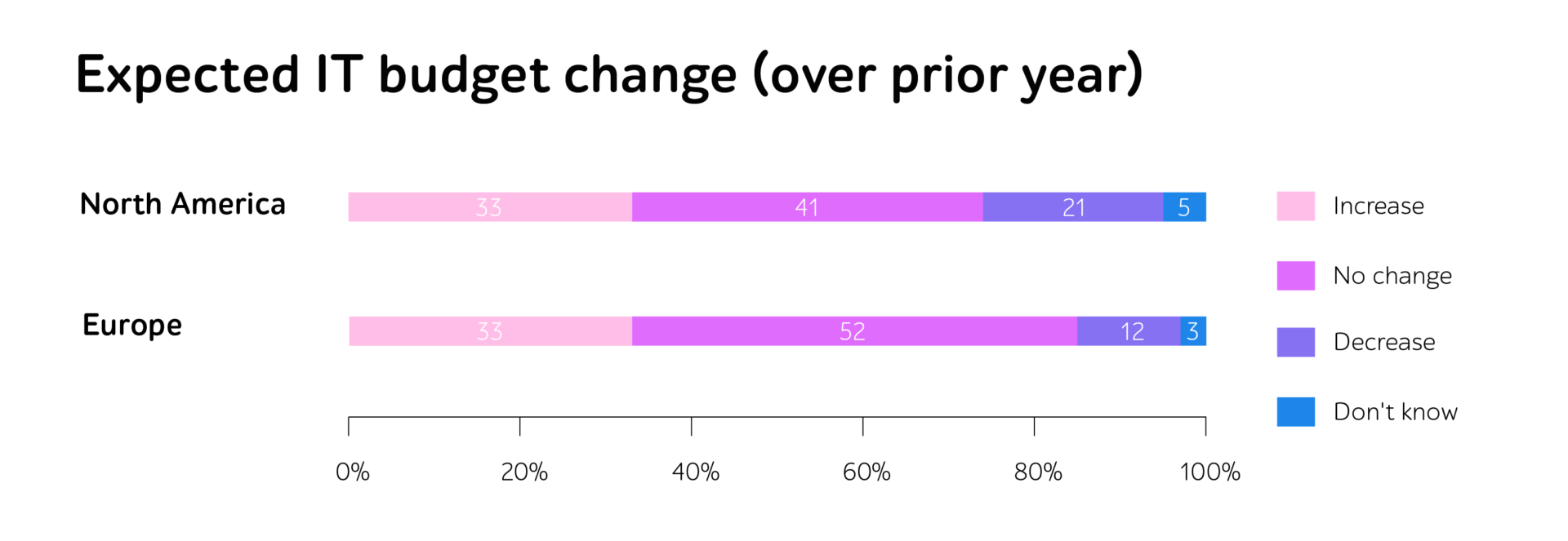
Full-cycle testing: introduce the missing link into your IT strategy
2020 gave an unambiguous answer to the question: “Is it worth developing the technological aspect of the business”? A global situation has created a new professional and economic environment that dictates how to maintain competitiveness in the market.
With digital transformation on the rise, IT budgets allocation has changed. According to SWZD’s research, 80% of European and North American companies expect to increase their IT budget in the next 12 months or have the same level as of this year. It is happening against the background of a total decrease in funding due to global economic stagnation caused by the “black swan.”

Changes like these are transforming technology from an element of cost efficiency to a central component of a business. But how to ensure the successful implementation of complicated IT solutions amid rising cybercrime activities?
Full-cycle testing may become the way out. In this article, we are detailing the essence, prerequisites for adoption, and business benefits it can bring.
When to start testing?
Oops… Have you noticed that users are spending too little time on your site, in your app, and more? The reasons can vary, from prolonged page loads to UX defects, but it’s not the best perspective for your software product, right?
To guarantee a more successful scenario, we recommend considering full-cycle testing (FCT) to ensure the quality of software solutions at every stage of development starting from the requirements formation to release.
When to choose full-cycle testing
We suggest that you consider 3 cases when business may profit from its introduction.
Low software quality
A software product with an abundance of defects can provide more opportunities for cybercriminals to take an advantage of vulnerabilities, create a negative user experience, and may even lead to product recalls or shrinking revenues.
Today with so many apps at users’ disposal, a highly competitive market requires both reduced time to benefits and unhindered solution operation. Keep that in mind.
Poorly configured QA processes
An all-embracing and properly tuned testing ecosystem can help spot issues at the outset of development, enable brisk problem-solving, and guarantee a continuous improvement process.
For instance, smart team scalability allows quick onboarding of talents possessing the relevant skill set and avoiding any interruptions in the development process. While A-to-Z reporting enables project transparency so that you’ll manage to trace progress in real time. If currently you are following a different path, probably, it’s time to change something.
Preparing for a major release
Before entering the market, you may require a whole set of checks: performance, security, accessibility testing, and whatever depending on your product specifics and target audience.
With that in mind, a fair question arises. What would you choose: contact a single vendor offering a turnkey QA solution or spending time and money trying to order services from multiple providers?
A case in point describes the cooperation with a large US-based e-commerce solution owner. A customer decided to migrate from the Magento Community Edition to Enterprise Edition and ensure high solution quality throughout and after the transformation process.
To attain this objective, a dedicated QA team prepared a plan for the full testing cycle, which included functional, performance, compatibility, UI, and mobile application testing. As a result, critical software issues that could negatively impact solution operation were eliminated, and the client entered the market on time with a reliable software product.
Full-cycle testing benefits within the development process
We propose you to have a closer look at the advantages you can receive after giving preference to thorough QA support during multiple SDLC stages.
Planning and requirements preparation
Functional requirements with no inconsistencies or issues in business logic can eliminate the chance of post hoc expensive defect fixing or protracted development time.
Design and prototyping
During this stage, testing affirms the compliance of the developed prototype with the requirements and allows verifying proper operation of the basic functionality. Meanwhile, usability testing helps benchmark weak spots in an app’s features to improve them further.
Development
The engineers at this point are involved in diverse QA activities aimed at enhancing quality level, from functional testing to test automation. However, bear in mind that particular testing types like security or performance are carried out only after fixing critical issues, as they may block further scope.
Deployment
Prior to software delivery, acceptance testing helps guarantee a system’s compliance with the stated business requirements and significantly scale down the risk of defects spot in a production environment.
Stages in the development process may vary depending on the chosen methodology and product specifics. Nevertheless, accurate testing contributes to curtailing time to market, enabling high-quality solution operation, and increasing customer satisfaction level.
Summing up
A shift in the global context has compelled businesses to switch to the online and simultaneously accelerate product delivery. To perform digital transformations with confidence and improve software quality, one may leverage full-cycle testing.
Implemented early in the SDLC, it enables software proficiency, ensures process transparency, and allows introducing turnkey QA solutions for reaching mission-critical objectives.
Looking for advice on launching full-cycle testing? Contact a1qa’s experts to learn the nuances of the process.



